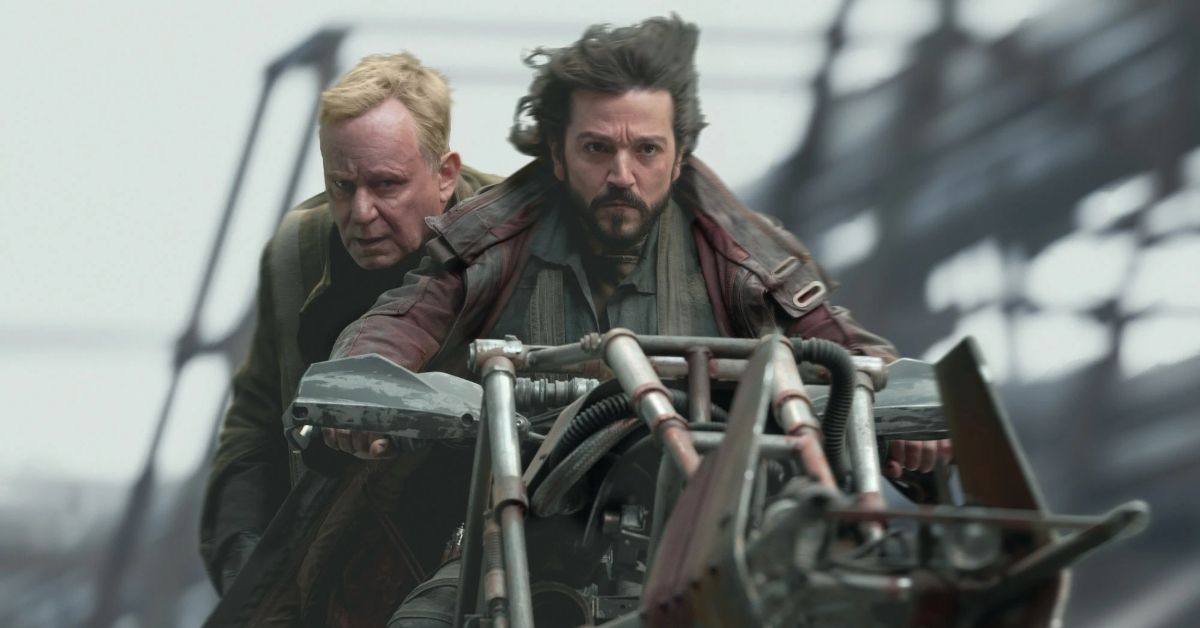Quick Links
Tony Gilroy is not only the mastermind behind George Clooney's most underrated (and arguably best) film but he's also behind one of the most critically applauded Star Wars shows. There's no doubt that some of the other Disney+ Star Wars properties have missed the mark. This includes Ewan McGregor's Obi-Wan as well as Boba Fett, which got a lot of things wrong according to fans.
But Andor is on another level.
There's even already a buzz about the second season. At the time of this writing, fans haven't even seen the middle of the first, but they're ecstatic. And there are a few reasons for the Jedi-free show's success. In an interview with The Hollywood Reporter, creator Tony Gilroy shed light on some of them...
Andor Isn't Star Wars Nostalgia-Bait
For many, Rogue One remains one of the best Star Wars projects. And this is, in part, due to Tony Gilroy's re-writes. The Director of Duplicity and Michael Clayton was brought on to rework the Star Wars prequel film and it paid off in spades. So much so that he was asked to showrun his very own series, which brought back Diego Luna's Cassian Andor for Rogue One, among others.
As pointed out by many, including the interviewer at The Hollywood Reporter, Andor seems to work so well because Tony doesn't lean too far into nostalgia. While the mostly loathed Star Wars sequel trilogy was almost entirely about recalling, referencing, or redoing the past, Andor keeps things fresh and new.
Sure, there are tons of Easter eggs for those paying close enough attention. But the series really works because it doesn't want to crowd please. It also doesn't care about the formulaic story structures that Star Wars properties so regularly use. Most importantly, it's not made by Star Wars fanatics.
"I think it imprinted on Rogue because that was my point of entry. It wasn’t that I didn’t like it. It just wasn’t on my radar. I wasn’t in awe of it," Tony Gilroy explained to The Hollywood Reporter in August 2022.
"So when I came in here to futz around and repair [Rogue One], I knew I’d do my thing. I was going to bring my thing here. And it worked. We won, and then everybody was incredibly euphoric and everything. So my sort of imprinting experience was, 'Well, that’s how you do it.' And that’s what I do. That’s the way to go. So I didn’t have to relearn that."
Tony continued by saying, "We have this experience all the time. In every department, we’ve had all kinds of people come in, and they know it’s Star Wars, so they change their behavior. They change their attitude. They change their thing. An actor will come in off a Ken Loach movie or something, they’ll put on a Star Wars [costume], and all of a sudden, this great actor, who auditioned for you and didn’t know what it really was, starts acting differently. And you go, 'Wait, no. Do your thing. You’re here because we want you to be real.'"
While Tony knows this is a "testament to the power of Star Wars" he also believes it gets into people's heads too much and results in poor imitations of what worked in the original three films.
"It really gets into people’s heads, but to change the lane and do it this way, it takes a little effort."
Andor Uses A Lot Of Practical Effects And Real Sets
The Mandalorian completely revolutionalized the way Star Wars projects are made with The Volume technology. While it's miles and miles better than green screen technology, it does create a sort of fake feeling. At least, it doesn't quite replicate the texture of a real-life set.
This was an important feature for Tony Gilroy to implement. Much like the original three films, the use of real-life locations and practical sets was essential. And you can really see the results in the first few episodes of Andor.
"The first decision you have to make is who’s going to be your production designer. Even in writing, my first call is to the production designer, because everything we do has to be designed," Tony explained to The Hollywood Reporter.
"So we put a marker down. It was kind of a test for Disney: 'How serious are you?' We didn’t want to go with any of the traditional Star Wars people. We wanted [production designer] Luke Hull, who was like 12 years old and had just done Chernobyl. He’s just a fricking genius, but non-Star Wars in every way. So we brought him over. As I was doing the [series] bible, I wrote the first three episodes as a sort of a test. "
Tony continued by saying, "In a perfect world, we’d be able to shoot location and shoot old school, and then we’d use the Volume when we want to use it. There are times when the Volume would be really good for us, but the technology doesn’t exist to do both. You have to make a choice at this point because of the workflow on the Volume. All your post-production has to be done beforehand. You have to shoot all of your plates. Everything has to be done. When you go in the Volume, everything’s done. You’re just adding the actors."
But Andor's system is completely different, according to Tony's interview with The Hollywood Reporter.
"We shoot everything with the actors, and we build out from there if we need to build out. And those two systems, maybe there’s somebody who’s doing it, but economically, you can’t do [both]. So, automatically, we were just like, 'We have to be a build show.' It wasn’t a controversy, really. I saw it get turned into a controversy the other day, but it’s not like that at all. There are times where we’d love to use it. It does some great things."

